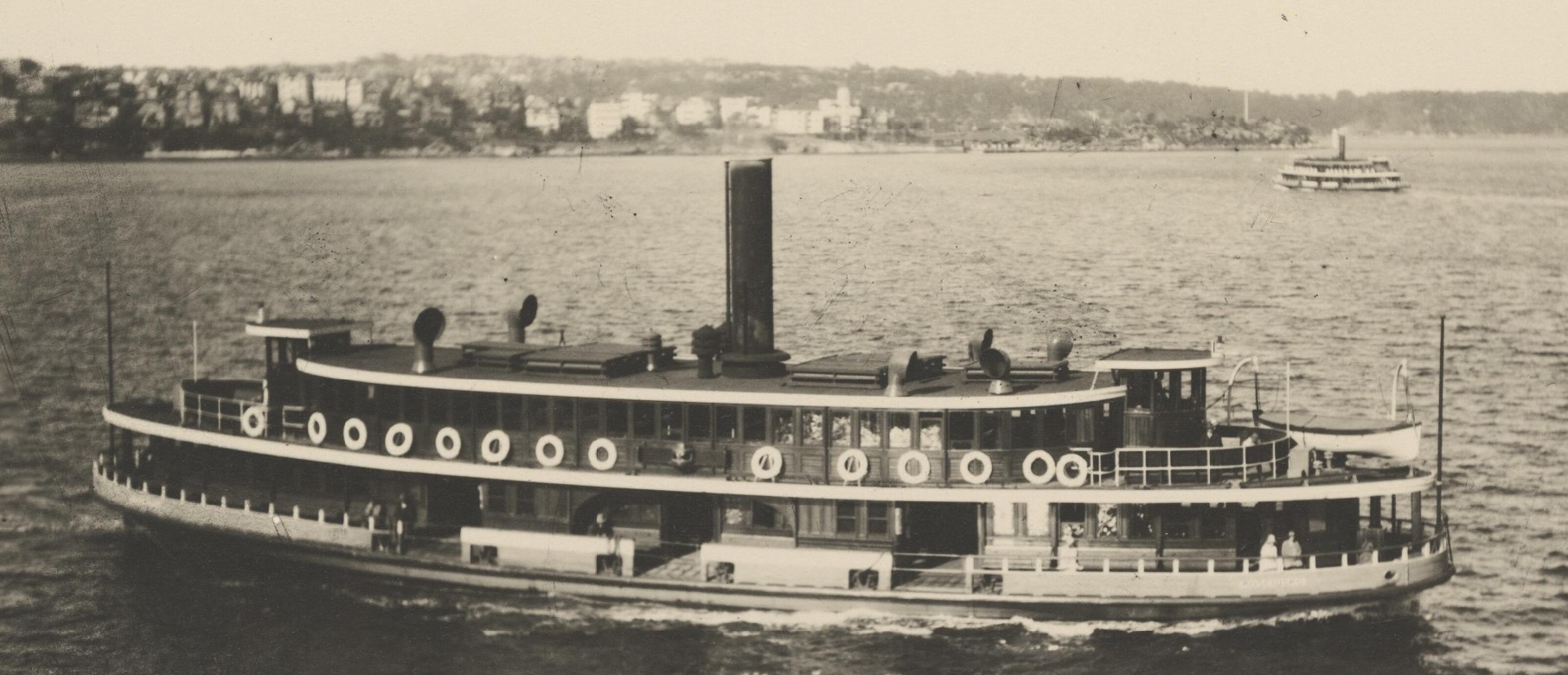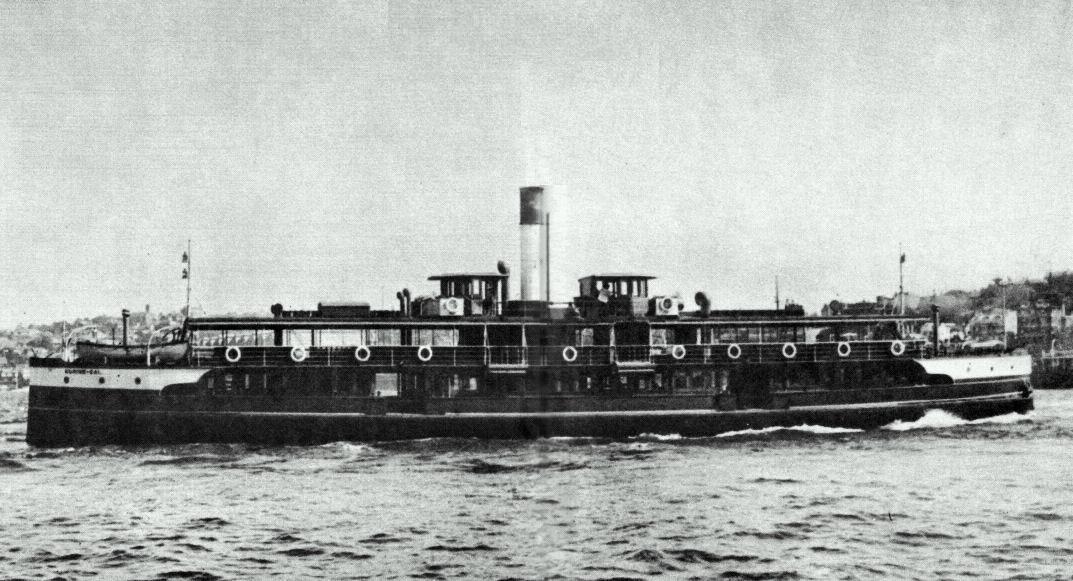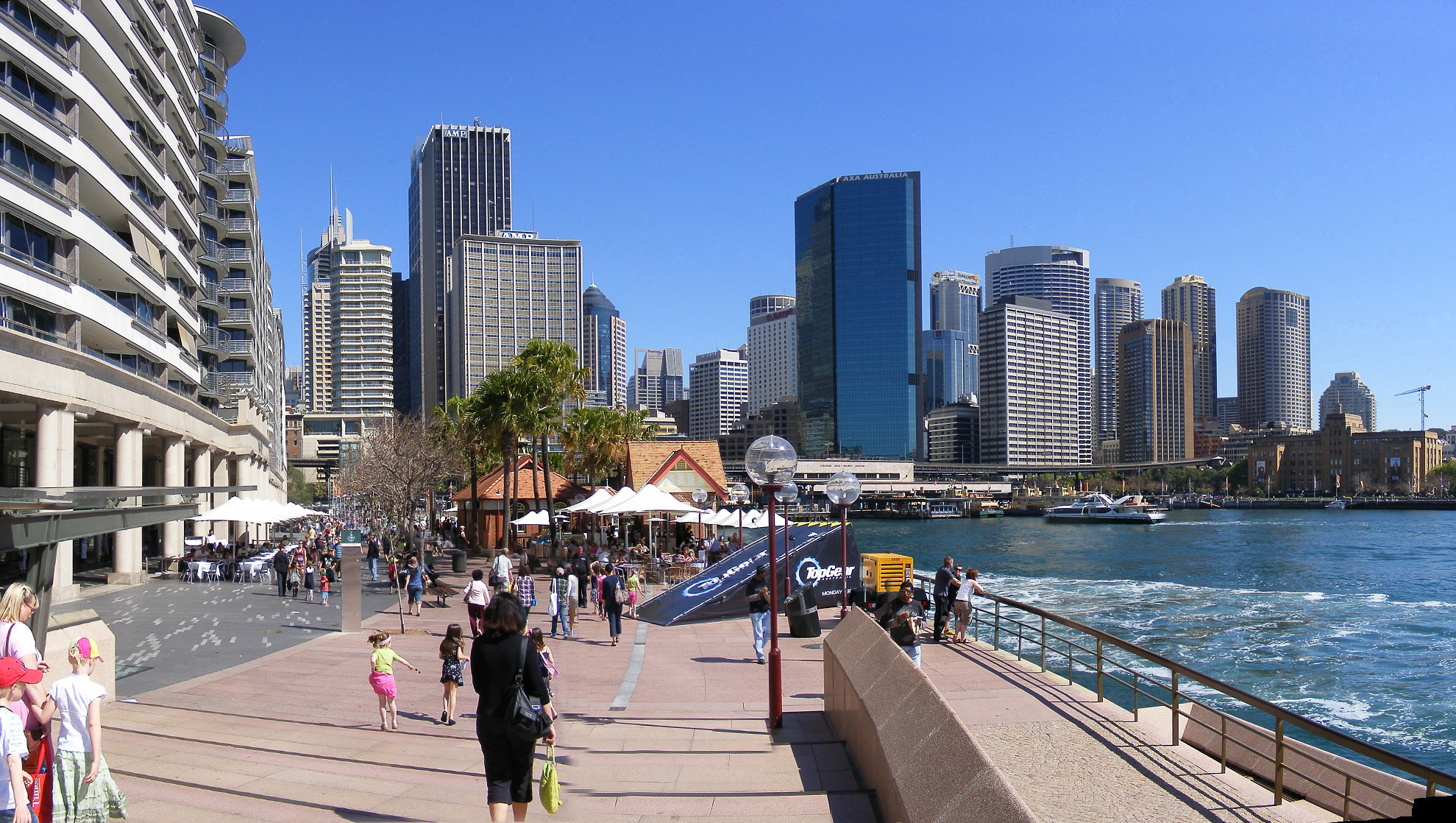|
Kubu (ferry)
The ''Kirrule''-type ferries (or Kubu-class) - ''Kiandra'', ''Kirrule'' and ''Kubu'' - were three identical K-class ferries that operated on Sydney Harbour by Sydney Ferries Limited. The three steam ferries were built in 1910, 1911 and 1912 at the height of the boom in ferry traffic across Sydney Harbour prior to the opening of the Sydney Harbour Bridge. They were the second largest type of inner harbour vessels and built for the rapidly increasing North Shore demand. Sydney Ferries Limited generally choose Australian Aboriginal names for the early twentieth "K-class" steamers. "Kiandra" is a corruption of Aboriginal 'Gianderra' for 'sharp stones for knives' and a town in NSW. ''Kirrule'' is thought to mean 'aroused', and 'Kubu' "oak tree". Design & construction When built, they were the most refined of the K-class ferries, and among the largest of the type. As with all Sydney ferries at the time, they were steamers but were not among those ferries later converted to diesel ... [...More Info...] [...Related Items...] OR: [Wikipedia] [Google] [Baidu] |
Sydney Ferries Limited
Sydney Ferries Limited operated ferry services on Sydney Harbour from 1900 until June 1951. The company grew out of the North Shore Steam Ferry Company and took over smaller ferry operators to become the largest ferry operator in Sydney's history. Without a physical connection across the harbour, demand for ferry services to developing areas on the North Shore rose dramatically and Sydney Ferries commissioned 27 large ferries in its own right between 1900 and 1922. The company named its vessels with Australian Aboriginal words beginning with "K". The 1932 opening of the Sydney Harbour Bridge saw the companies annual patronage drop from 40 million to 15 million. Nineteenth century beginnings The first regular passenger ferry services across the harbour began in the 1840s and 1850s, at which time the Gerrard Brother's ran paddle steamers ''Ferry Queen'', ''Brothers'', and ''Agenoria''. ''Herald'' was sent out from England for the North Shore Steam Company and later for E Evans ... [...More Info...] [...Related Items...] OR: [Wikipedia] [Google] [Baidu] |
South Steyne
The SS ''South Steyne'' is a former Manly ferry on Sydney Harbour. She was the world's largest steam-powered passenger ferry and operated on the service from 1938 to 1974. Restored in the 1980s, she served as a restaurant ship in Newcastle in the 1990s, and in 2000 was moved back to Sydney and open to the public at Darling Harbour. Since April 2016 she has been stored at Berrys Bay. She was added to the New South Wales State Heritage Register on 2 April 1999. The ''South Steyne'' was designed by Walter Leslie Dendy and John Ashcroft and built from 1937 to 1938 by Henry Robb Ltd. of Scotland. Description ''South Steyne'' is a double-ended, double-screw steamship powered by a four cylinder Triple expansion steam engine. The ship's boilers were fitted to burn either coal or oil however she has only used oil. She could achieve a speed in excess of 17 knots, almost as fast as the twin Manly ferries, ''Dee Why'' and ''Curl Curl'', in service since 1928. With a length ... [...More Info...] [...Related Items...] OR: [Wikipedia] [Google] [Baidu] |
Blackwattle Bay
Blackwattle Bay is a bay located to the southeast of Glebe Island and east of Rozelle Bay on Sydney Harbour, in New South Wales, Australia. The bay was named in 1788 after the Black Wattle tree found at the bay, which was used for housing construction. When first used, the bay was a swampy inlet fed by a creek that ran from its eastern end. Industrial use by tanners and slaughter houses caused the area to be fouled by noxious fumes and there were many complaints by the residents. An embankment with a bridge was built across the swamp to provide access from Glebe to Pyrmont, being known as Bridge Rd. The area to the east of the road was filled in becoming Wentworth Park. A coal unloader and other facilities were built on the west side of the road and it now also features the Sydney Fish Market on its northern side. See also * Blackwattle Bay coal wharves and depots *Sydney Fish Market *Wentworth Park References Gallery File:Bellevue_House_Blackwattle_Cafe.JPG, Bell ... [...More Info...] [...Related Items...] OR: [Wikipedia] [Google] [Baidu] |
Kosciusko (ferry)
''Kosciusko'' was a " K-class" ferry on Sydney Harbour. Launched in 1911, the timber-hulled steamer was built for Sydney Ferries Limited during the boom in cross-harbour ferry travel prior to the opening of the Sydney Harbour Bridge. ''Kosciusko'' was converted to diesel propulsion in the 1950s and served on Sydney Harbour until 1975 when she was sent to Hobart to assist following the collapse of the Tasman bridge. She was burnt out in 1982. Background Intended for the Mosman run, ''Kosciusko'' was built for Sydney Ferries Limited during the early twentieth century boom in cross-Harbour travel prior to the 1932 opening of the Sydney Harbour Bridge. At the time, the company ran one of the largest ferry fleets in the world. The ferry was part of broader type of around 20 double-ended timber screw ferries the Sydney K-class ferries that the company commissioned between the 1890s and early 1920s to meet the booming demand. While ''Kosciusko'' followed the Sydney Ferries ... [...More Info...] [...Related Items...] OR: [Wikipedia] [Google] [Baidu] |
Max Dupain
Maxwell Spencer Dupain AC OBE (22 April 191127 July 1992) was an Australian modernist photographer. Early life Dupain received his first camera as a gift in 1924, spurring his interest in photography. He later joined the Photographic Society of NSW, where he was taught by Justin Newlan; after completing his tertiary studies, he worked for Cecil Bostock in Sydney. Career Early years By 1934 Max Dupain had struck out on his own and opened a studio in Bond Street, Sydney. In 1937, while on the south coast of New South Wales, he photographed the head and shoulders of an English friend, Harold Salvage, lying on the sand at Culburra Beach. But it was not until the 1970s that the photograph began to receive wide recognition. A print of the photograph was purchased in 1976 by the National Gallery of Australia in Canberra and by the 1990s it had cemented its place as an iconic image of Australia. An early vintage print of the original version of the Sunbaker is contained in an albu ... [...More Info...] [...Related Items...] OR: [Wikipedia] [Google] [Baidu] |
Milsons Point
Milsons Point is a suburb on the lower North Shore of Sydney, in the state of New South Wales, Australia. The suburb is located 3 kilometres north of the Sydney central business district in the local government area of North Sydney Council. Milsons Point is also the geographical feature that juts into Sydney Harbour from the northern side, directly opposite Sydney Cove, the spot where the first European settlement was established in 1788. Milsons Point was named after James Milson (1783–1872), one of the earliest settlers. History Milsons Point was named after James Milson (1783–1872), a free settler originally from Lincolnshire. Milson settled in the area near Milsons Point and established a profitable business supplying ships with stone ballast, fresh water, and the produce of his dairy, orchard, and vegetable gardens. In the early 1820s Milson settled in the vicinity of Jeffrey Street, Kirribilli, on 120 acres of land he leased from Robert Campbell (1769–1846). In ... [...More Info...] [...Related Items...] OR: [Wikipedia] [Google] [Baidu] |
Circular Quay
Circular Quay is a harbour, former working port and now international passenger shipping port, public piazza and tourism precinct, heritage area, and transport node located in Sydney, New South Wales, Australia on the northern edge of the Sydney central business district on Sydney Cove, between Bennelong Point and The Rocks. It is part of the local government area of the City of Sydney. The Circular Quay area is a popular neighbourhood for tourism and consists of walkways, pedestrian malls, parks and restaurants. It hosts a number of ferry quays, bus stops, and a railway station. Often referred to as the "gateway to Sydney", the precinct has views of the Sydney Harbour Bridge and the Sydney Opera House and is a common location for viewing Sydney New Year's Eve fireworks. History Indigenous history The Aboriginal name for Circular Quay is ''Warrung'', meaning "Little Child". The first people to occupy the area now known as Sydney were Aboriginal Australians. Radiocarbon da ... [...More Info...] [...Related Items...] OR: [Wikipedia] [Google] [Baidu] |
Nielsen Park
Nielsen may refer to: Business * Nielsen Gallery, an American commercial art gallery * Nielsen Holdings, global information, data, and measurement company ** Nielsen Corporation, a marketing research firm ** Nielsen Audio, formerly Arbitron, which measures radio listenership ** Nielsen Broadcast Data Systems, a service also known as BDS that tracks monitored radio, television, and internet airplay of songs ** Nielsen Media Research, the company that creates the Nielsen ratings *** Nielsen ratings, a rating system used to gauge audience measurement of television programming habits in the United States * Nielsen Norman Group, a computer user interface and user experience consulting firm Other uses * Nielsen (surname), including a list of people * Nielsen (crater), a lunar impact crater on the Oceanus Procellarum * Nielsen–Olesen vortex, a point-like object localized in two spatial dimensions or a classical solution of field theory with the same property * Nielsen fixed-point theor ... [...More Info...] [...Related Items...] OR: [Wikipedia] [Google] [Baidu] |
MV North Head
The MV ''North Head'' (formerly SS ''Barrenjoey'') was a ferry operated by the Port Jackson & Manly Steamship Company and its successors on the Manly service from 1913 until 1985. The vessel was launched as ''Barrenjoey'', a steamer and one of the six ''Binngarra''-type Manly ferries which were built between 1905 and 1922. In 1951, she was converted to diesel-electric power, completely rebuilt and renamed ''North Head''. She was removed from service in 1985 following the introduction of the ''Freshwater''-class ferries. She spent time in Hobart as a floating restaurant and, in 2000, she was taken to Cairns where she remains grounded and in deteriorating condition. The name "Barrenjoey" was taken from the headland at the northern tip of Pittwater. "North Head" is the northern headland at the entrance to Sydney Harbour. Background The Port Jackson & Manly Steamship Company's fleet transitioned comparatively late to screw propelled vessels and the fleet comprised mostly pad ... [...More Info...] [...Related Items...] OR: [Wikipedia] [Google] [Baidu] |
The Daily Telegraph (Sydney)
''The Daily Telegraph'', also nicknamed ''The Tele'', is an Australian tabloid newspaper published by Nationwide News Pty Limited, a subsidiary of News Corp Australia, itself a subsidiary of News Corp. It is published Monday through Saturday and is available throughout Sydney, across most of regional and remote New South Wales, the Australian Capital Territory and South East Queensland. A 2013 poll conducted by Essential Research found that the ''Telegraph'' was Australia's least-trusted major newspaper, with 49% of respondents citing "a lot of" or "some" trust in the paper. Amongst those ranked by Nielsen, the ''Telegraph'' website is the sixth most popular Australian news website with a unique monthly audience of 2,841,381 readers. History ''The Daily Telegraph'' was founded in 1879, by John Mooyart Lynch, a former printer, editor and journalist who had once worked on the ''Melbourne Daily Telegraph''. Lynch had failed in an attempt to become a politician and was lookin ... [...More Info...] [...Related Items...] OR: [Wikipedia] [Google] [Baidu] |
Sydney Cove
Sydney Cove (Eora: ) is a bay on the southern shore of Sydney Harbour, one of several harbours in Port Jackson, on the coast of Sydney, New South Wales. Sydney Cove is a focal point for community celebrations, due to its central Sydney location between the Sydney Opera House and the Sydney Harbour Bridge. It is also one of the main congregation points for Sydney New Year's Eve. History The Eora name for Sydney Cove was recorded by several early settlers of the First Fleet variously spelt as Warrane, War-ran, Warrang and Wee-rong. The spot is of great significance, as the first meeting place between Eora people and Europeans. Before colonisation of the area, Eora men speared fish from the shoreline, and women line-fished from their ' (canoes). Sydney Cove was named after the British Home Secretary, the 1st Baron Sydney (who was later created 1st Viscount Sydney in 1789). It was the site chosen by Captain Arthur Phillip, RN between 21 and 23 January 1788 for the British p ... [...More Info...] [...Related Items...] OR: [Wikipedia] [Google] [Baidu] |
Dee Why-class Ferry
The ''Dee Why'' and ''Curl Curl'', were two identical steam ferries servicing Sydney Harbour's Circular Quay to Manly service. Both commissioned in 1928, they were the largest ferries on Sydney Harbour until the 1938 introduction of the ''South Steyne''. ''Curl Curl'' was the fastest ferry on the harbour, able to do the Manly run in 22 minutes. ''Dee Why'' was only marginally slower. The two ferries were built in Scotland and steamed to Sydney under their own power. The cost to build them in Australia was too high, so the company looked to Scotland for their new ships. ''Curl Curl'' served until 1960 while ''Dee Why'' was in service until 1968. The ferries were named after the Sydney suburbs of Dee Why and Curl Curl that lie north of Manly. Background In the 1920s, the Port Jackson & Manly Steamship Company ran a seven-ship fleet comprising the '' Kuring-gai'' and six similar Sydney-built double-ended screw steamers: ''Binngarra'' (1905), '' Burra Bra'' (1908), ''Bellubera'' ... [...More Info...] [...Related Items...] OR: [Wikipedia] [Google] [Baidu] |








.jpg)